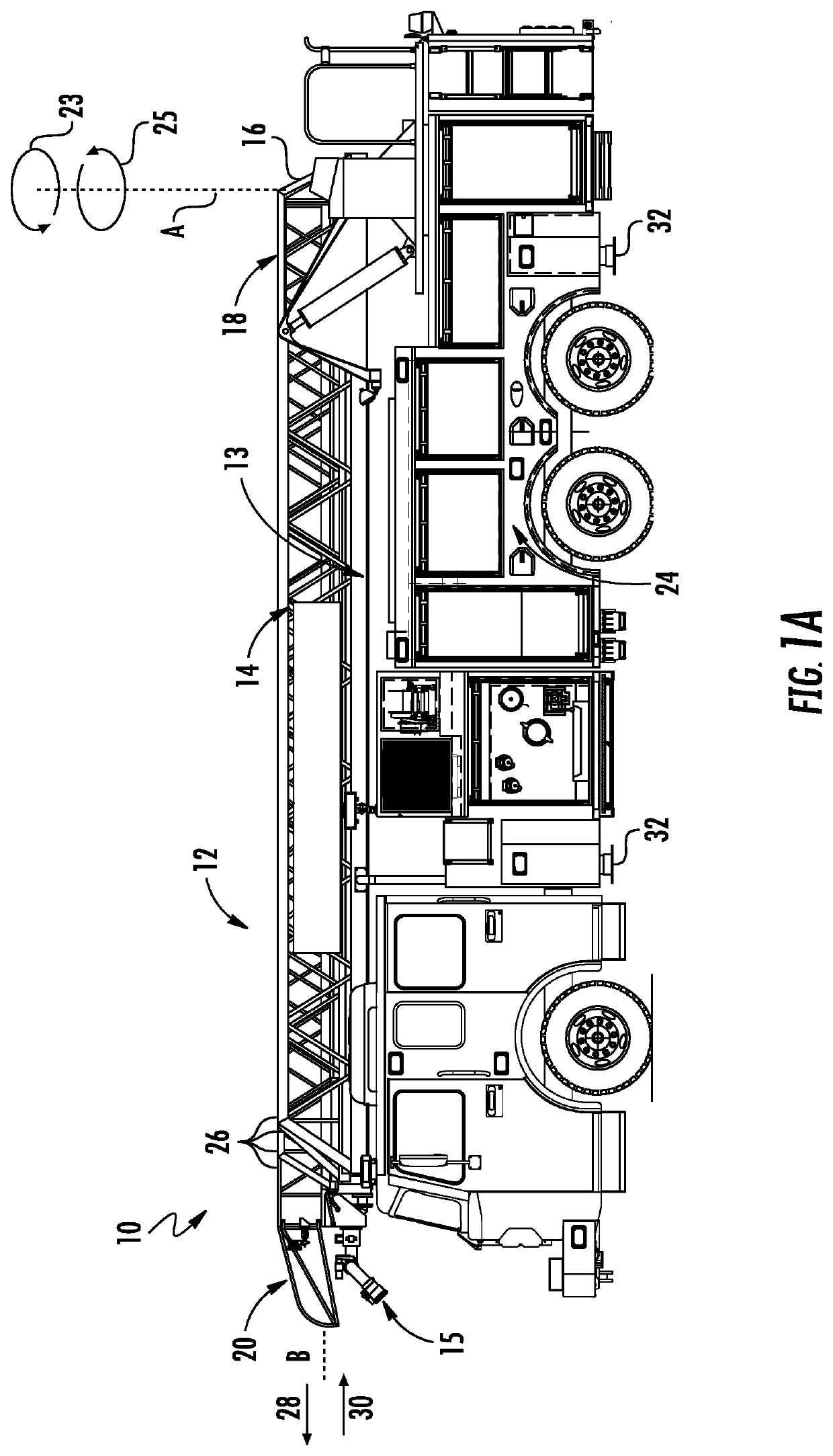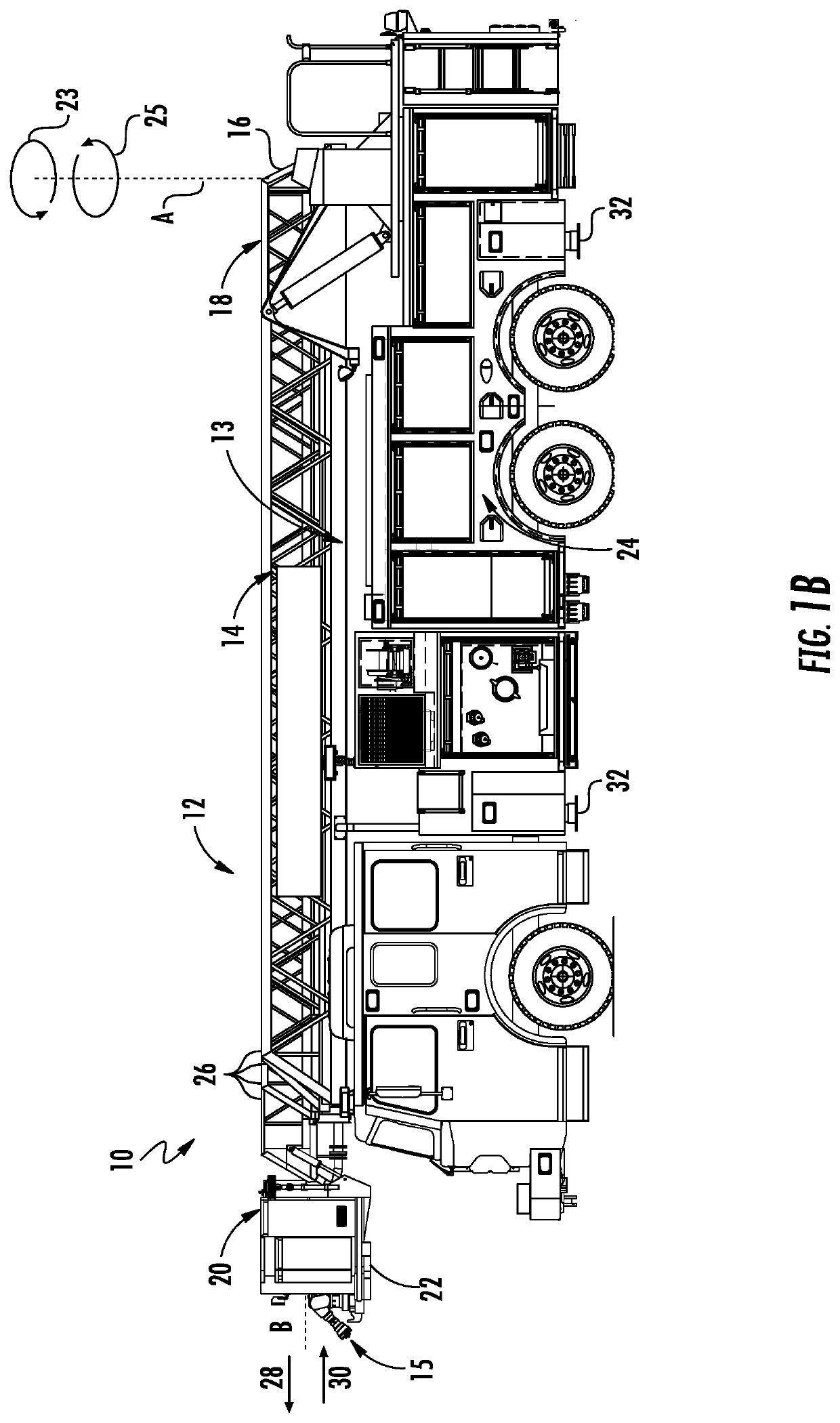Multi-stance aerial device control and display
a multi-stance, aerial device technology, applied in the direction of instruments, vehicle maintenance, liquid/fluent solid measurement, etc., can solve the problems of inability to fully deploy the stabilizer, fire departments have no way to plan ahead, and stop any further deployment of the aerial device, etc., to achieve the effect of increasing the tip load, reducing reliability, and increasing the tip load
- Summary
- Abstract
- Description
- Claims
- Application Information
AI Technical Summary
Benefits of technology
Problems solved by technology
Method used
Image
Examples
Embodiment Construction
[0080]FIGS. 1-6 illustrate a vehicle 10 with an aerial and platform device 12. The aerial device 12 includes a ladder 14 and a control means 16. In FIG. 1A the ladder 14 of the aerial device 12 has a first end 18 that is coupled to the control means 16 and a second end 20 that is free. In FIG. 1B the ladder of an the aerial device 12 has a first end 18 that is coupled to the control means 16 and a second end 20 that is coupled to a platform 22.
[0081]Extending along the ladder 14 of the aerial device 12 may be piping 13 designed to allow fluid, such as water, to flow from the piping 13 when the fluid is sufficiently pressurized. At the end of the piping 13 can be a fluid monitor nozzle 15 that can meter the flow of the pressurized fluid being expelled from the piping 13.
[0082]The control means 16 of the vehicle 10 can rotate the ladder 14 and / or ladder 14 and platform 22 about vertical axis A in a first direction 23 and a second direction 25 that is opposite the first direction 23 wh...
PUM
 Login to View More
Login to View More Abstract
Description
Claims
Application Information
 Login to View More
Login to View More - R&D
- Intellectual Property
- Life Sciences
- Materials
- Tech Scout
- Unparalleled Data Quality
- Higher Quality Content
- 60% Fewer Hallucinations
Browse by: Latest US Patents, China's latest patents, Technical Efficacy Thesaurus, Application Domain, Technology Topic, Popular Technical Reports.
© 2025 PatSnap. All rights reserved.Legal|Privacy policy|Modern Slavery Act Transparency Statement|Sitemap|About US| Contact US: help@patsnap.com



